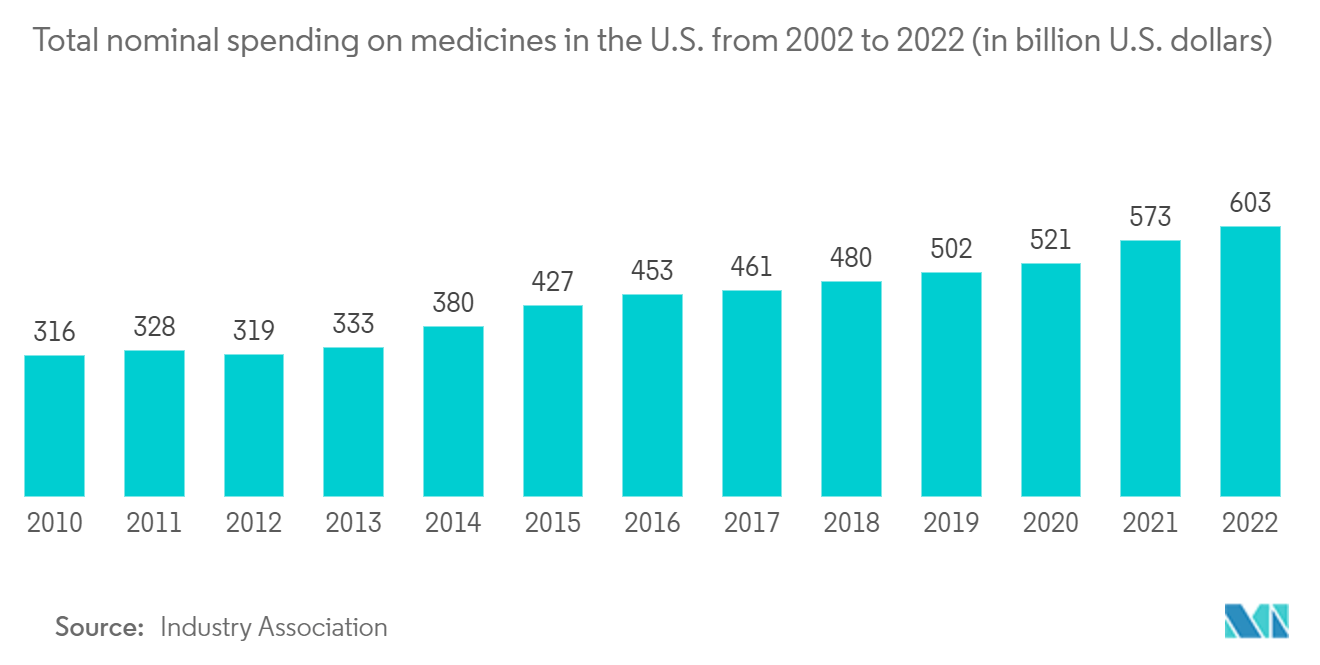Market Trends of Global Cryogenic Transportation Services Industry
North America Dominates the Global Market Share in the Coming Years
- Demand for LNG as a cleaner energy source in North America has been growing steadily. Consequently, demand for cryogenic transport of LNG from production sites to storage facilities and end users has been increasing. As of November 2023, the US Energy Information Administration (EIA) expected North America's liquefied natural gas (LNG) export capacity to reach 24.3 billion cubic feet per day (Bcf/d) by 2027. This is more than double the region's current capacity of 11.4 Bcf/d.
- The North American pharmaceutical industry is expanding, requiring storage and transport at extremely low temperatures for many products, such as vaccines and some medicinal products. In 2024, the North American pharmaceutical industry is expected to generate USD 664.4 billion in revenue. The North American active pharmaceutical ingredients (API) market was valued at USD 65,951.06 million in 2022, and it is expected to reach USD 87,662.20 million by 2030.
- Significant technical advances, such as the development of more efficient and secured cold storage tanks and trailers, have taken place within the Cryogenic Transport Industry. These improvements have enabled the industry to transport a larger volume of cryogenic materials over longer distances with greater safety and reliability.

Demand in Chemical Segment is Driving the Market With the Largest Market Share
- Cryogenic liquids are materials with a boiling point of less than – 100 °F (-73 °C). Most cryogenic liquids are below -150°C. Common cryogenic liquids that are concerning include nitrogen, argon, helium, hydrogen, methane, and carbon monoxide. Nitrous oxide and carbon dioxide, which have slightly higher boiling points, are sometimes added to this category as well. Several hazards are associated with the use of these liquids. Therefore, their usage must be properly controlled to avoid any contact with components or liquids or exposure to gases.
- In 2022, the global total exports of chemicals and pharmaceuticals accounted for approximately USD 2.76 trillion, or EUR 1.89 trillion, and the global pharmaceutical industry accounted for EUR 981 billion (USD 1,056.68 billion). Europe was the world's largest chemical importer in 2022. There is also a high demand for chemicals in Asia-Pacific and North America, with imports accounting for USD 603.6 billion and USD 247 billion, respectively.
- In 2022, chemical consumption worldwide accounted for over EUR 5.77 trillion. Overall, regional chemical consumption is expected to grow the most rapidly in Asia in the coming years. Asia plays a notable role in the global chemicals market, accounting for roughly a 60% share of the market in 2022. However, China alone is primarily responsible for the recent increases in Asia’s exports and consumption of chemicals.


